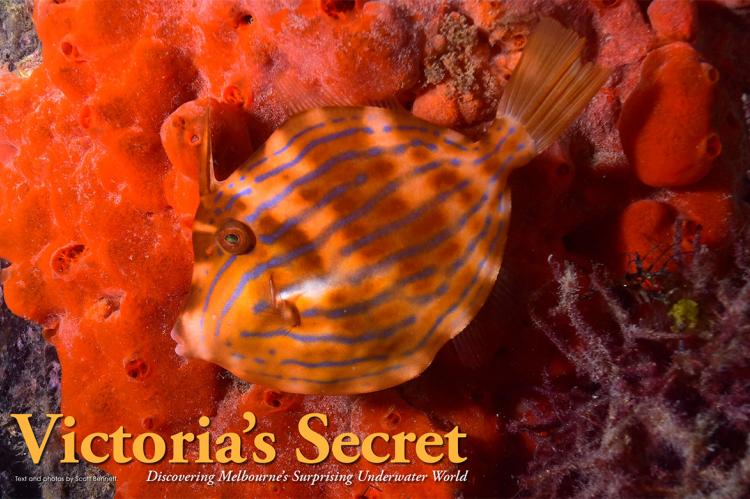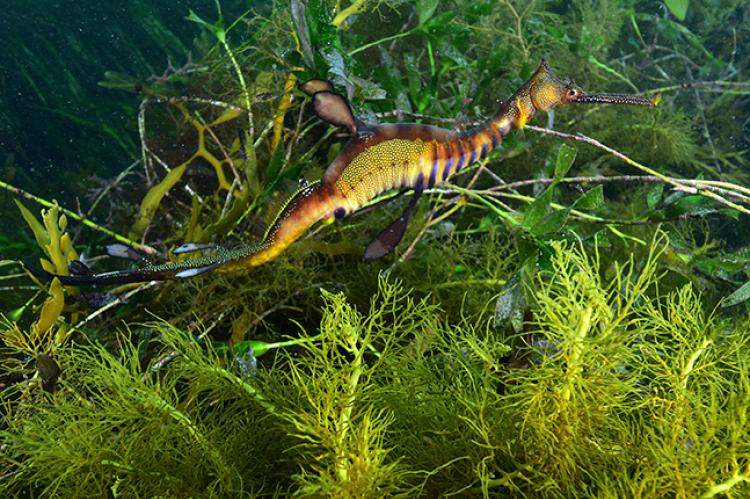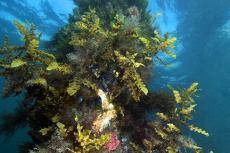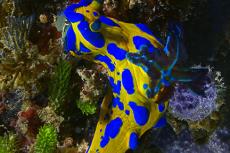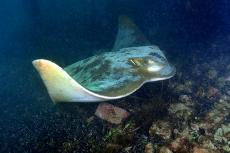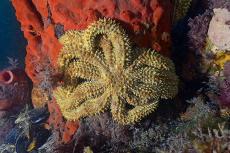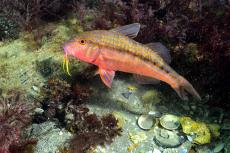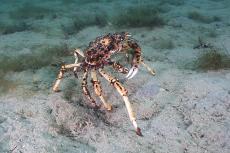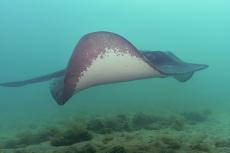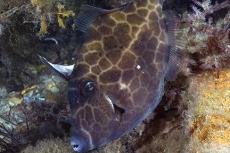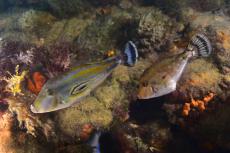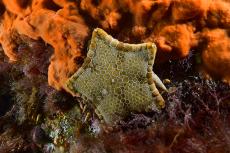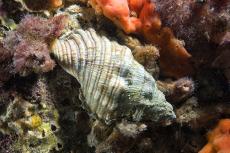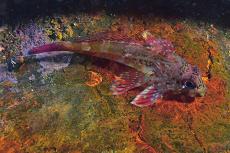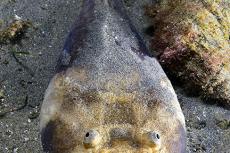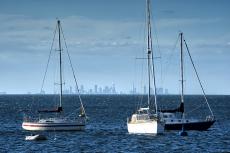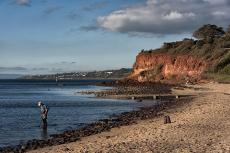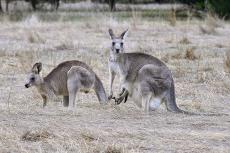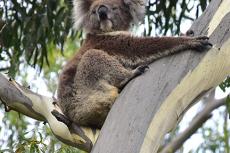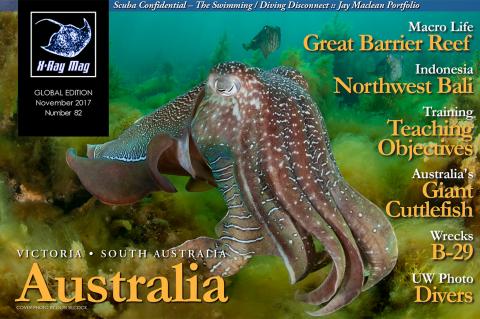Australia: Victoria's Secret
“You can dive in Melbourne?” was the baffled response from a Queensland hotel concierge upon telling her I was heading to Victoria to dive. And this was from an Australian who WAS a diver! When overseas visitors think of Australia, the Great Barrier Reef immediately comes to mind. However, Australian diving is not just about coral. Along the continent’s southern coast is an undersea world far removed from the tropics.
Although a long-time tropical diver, trips to the Great Lakes, South Africa and Denmark have triggered my interest in temperate diving. Seeing new environments and species have amped up my enthusiasm, especially with regards to photography. X-Ray Mag’s editor-in-chief, Peter Symes, has often told me he preferred temperate to tropical diving, and I was starting to see the light. The cold-water bug has bitten; it is just the actual “cold” part I am less than enthused by.
With a visit to Australia in the works, I was eager for a new dive destination. I had read many articles about Victoria diving and I had always been intrigued. Melbourne’s Port Phillip Bay and environs are host to a diversity of marine life, including a critter long on my must-see list: the weedy seadragon. I was also hoping to witness one of Victoria’s seasonal wonders: the autumn spider crab migration.
Melbourne’s diving scene quickly proved to be an entirely different animal. Melburnians know the marvels at their doorstep, and the area is home to a vibrant diving community. Despite dive shops aplenty, dive resorts and liveaboards are conspicuously absent. This is the land of do-it-yourself diving, a fact I discovered while trying to plan my visit.
Before leaving Canada, I researched dive shops and settled on Harbour Dive, located right in Mornington town. I decided to concentrate on shore diving, and it seemed like a good central location. For accommodation, I chose the Brooklands of Mornington, as it was within walking distance of the shop. Having never traveled south of Melbourne, I didn’t quite know what I would find. Certainly, the diving would be good, but I had no idea what to expect about the place itself. I purposely avoided looking at photos of it online, as I wanted to be surprised. In a nutshell, I was. In spades.
Getting there
Just getting to my hotel proved to be an adventure. Although airport shuttles service Mornington, they were limited to three daily, with the last one departing before my arrival. A taxi ride would cost more than my Brisbane-Melbourne flight, so what to do? The answer was a Skybus shuttle to nearby Frankston, which had numerous departures. From there, I would take a taxi to Mornington.
Baggage retrieved, I found the shuttle stop and boarded my bus. I quickly realized that Melbourne was big. Huge, actually. The trip to Frankston proved a lot longer than anticipated. What I expected to be an hour-long trip turned into two and a half hours, even longer than my flight from Brisbane. Yet, the pleasure of travel is not just in the destination, but the journey as well. The evening was beautiful and coastline views sublime. As the sun set behind Port Phillip Bay, I couldn’t see the other side.
From Frankston, I flagged a taxi and finally arrived at the hotel as it was getting dark. Incorporating a historic homestead circa 1878, the Brooklands proved to be a pleasant surprise. Quiet and secluded, the rooms were more like townhouses, with their own driveways, set amid three acres of gardens.
Diving
The next morning, I went to Harbour Dive, ready for the day’s adventure. Established in 2000 as a small family-owned dive shop, the business has grown into a multi-faceted retail and training center. Original owners Cathie and John Warren remain at the helm, and today the shop certifies more divers than any other store in Victoria.
Since I didn’t have a car, Cathie had arranged a guide and transport for me. This proved to be very expensive, but my only option. I met up with instructor Steve Juffkins, who would be both chauffeur and dive buddy for the next few days. After doing the necessary paperwork, I got fitted for some gear. Fortunately, early autumn temperatures off Mornington were around 21°C in the shallower waters, so a 7mm suit with hood proved more than adequate. In winter, temperatures can plummet to a chilly 8°C. With car fully loaded, we set out for Rye Pier. Even distances on the peninsula were greater than anticipated, so I was happy to have someone else doing the driving.
Rye Pier. Featuring a sweeping beach of white sand, Rye was a beautiful spot just to visit, let alone dive. Augmented by a peerless blue sky, the scene looked tropical, although I knew water temperatures would be a different story. There was plenty of parking, but one downside: the 150m walk down the pier to get to where the diving was. Fully geared with weights and camera, it proved to be a real workout.
Stopping for a breather, I glanced over to what I thought was a patch of vegetation in the shallows. “There’s a stingray,” remarked Steve and I halted, jaw agape. Even from a distance, I could see it was massive! Measuring over 2m across, smooth stingrays are the world’s largest and are frequently encountered at Mornington’s dive sites. Although their barbed tails are highly venomous, their dispositions are benign and readily approach divers. My pace quickened noticeably.
A divers’ platform at water level allowed us to finish gearing up. Being high tide, it was already a few inches underwater. Ready to go, a giant stride plunged me into a new world. For the uninitiated, temperate diving is very different than the tropics. There are no coral gardens or turquoise waters teeming with colorful reef fish. While not the most beautiful of locations, looks can be deceiving; there are treasures to be found!
Although the average depth was 11m, we kept shallow for most of the dive. Sponges proliferated, the pylons shrouded with growth of all colors. The seabed was strewn with mussels and broken shells along with eleven-armed sea stars as big as dinner plates. Old tires concealed magpie perch and bluespotted goatfish as moonlighter and barber perch milled about the pylons.
Closer scrutiny of the sponges revealed creatures hiding in plain sight. A green eye betrayed a mosaic leatherjacket, its orange body perfectly mimicking a sponge. Leatherjackets proved especially common; along with mosaics, we spotted horseshoe, toothbrush and Gunn’s leatherjackets. Australia has more than any other country, with 60 of the world’s 97 species residing within its waters. Of these, 22 are found only in the south, inhabiting sponge gardens, sea grass and rocky reefs.
Rye is renowned for spider crabs, which congregate during autumn in astonishing numbers. Unfortunately, I did not witness the mass migration, but they were around. Away from the pier, Steve found a pair on the sandy, pinchers wielded defiantly. A quick search yielded several more, all allowing a close approach for photography.
Suddenly, a dark shape in the corner of my eye made me turn; a huge smooth stingray was gliding in my direction. It was not aggressive, merely curious (tell that to my pulse though) and veered off at the last second. In stark contrast was a tiny ray the size of a small plate. Steve later told me it was a juvenile smooth stingray. I could scarcely believe this toddler would mature into a 2m behemoth!
Elsa’s Reef. Positioned approximately 50m off Rye Pier in 6-7m of water was Elsa's Reef, an artificial reef home to some distinctly eclectic objects. Bicycles, sculptures and twisted metal frames provided refuge for spider crabs as did a bench laden with bottles. An octopus darted into a recess while another crab sported a multi-pronged sponge atop its head. Steve gave a sign he was cold, so we headed back. Final dive time: 90 minutes, with nearly half a tank of air left. How great is that?
With the rest of the afternoon free, I pondered what to do. I had originally considered hiring a car to see the fairy penguins at Phillip Island. That is, until Steve told me it would be a two-hour trip EACH WAY, effectively nipping that plan in the bud. Steve recommended I take a walk down to the bay. Grabbing camera and tripod, I set out, not having a clue what to expect.
Mornington
“Undiscovered gem” is one of those phrases that gets bandied about with predictable frequency, yet it perfectly encapsulates Mornington. Located 57 km south of Melbourne's CBD, it is a world away from the urban hubbub. Celebrated for its beautiful beaches and village atmosphere, Mornington is a popular destination for day-tripping Melburnians. Lined by restaurants and shops, the pleasant main street led right down to the water.
A path led down to the beach and I decided to investigate. Here, I discovered one of the peninsula’s most endearing features: beach huts. I had seen similar structures in the United Kingdom, but these were colorfully painted and on actual sand rather than stones (no offense to my UK friends). Cool and quirky, they were a joy to photograph. In the distance was a surreal sight. So vast was the bay that Melbourne’s skyscrapers appeared to ascend right from the water like something out of Waterworld. Wandering over to Schnapper Point, Mornington’s pier teemed with tourists and fishermen, as sailboats cruised in the beautiful evening light.
Feeling peckish, I ventured back to the main street for some dinner. Despite it being mid-week, all the restaurant patios were packed. Looking for something different, one place immediately caught my eye. Serving up traditional Afghan cuisine, the Marco Polo oozed atmosphere, its interior ornamented with tribal rugs, lanterns and brass hookahs. The mixed grill of lamb and chicken kebabs provided a delectable finish to an unexpected day!
More diving
Flinders Pier. The next morning, Steve picked me up at 9:00 and we set out for Flinders Pier. After diving Rye, I could not wait to get back in the water! The drive was picturesque, passing rolling green hills interspersed with vineyards, farmland and patches of eucalypt forest. Wineries are a big business here, with 170 found throughout the peninsula. Unfortunately, diving and wine-tasting do not mix…
Set where the Western Port meets Bass Strait, 250m long Flinders Pier is a favorite of both fishermen and divers alike. Sheltered from the waters of Bass Strait by West Head, it is a magnet for life, including squid, King George whiting, Australian salmon, silver trevally, wrasse, leatherjackets and short-finned pike. However, it is renowned for residents that lure photographers from far and wide: Here be dragons!
Seadragons to be exact, as Flinders is a prime habitat for weedy seadragons, an Australian endemic found only in southern and eastern Australia. Close relatives of seahorses, they are slow-moving, relying on camouflage as protection against predation.
Lacking a prehensile tale, they drift along, feeding on tiny crustaceans and other zooplankton, their leaf-like appendages resembling swaying seaweed. Like seahorses, the males are tasked with caring for the eggs. Females lay around 120 eggs on the brood patch on the underside of the males' tail. Once fertilized, they are carried by the male for approximately a month before the hatchlings emerge.
According to Steve, Flinders is best dived with northerly winds below 20 knots on an outgoing tide. With winds coming from the southeast, conditions were not sounding good. With limited diving days, I did not want to miss the seadragons, so we decided to try.
From the pier, surface conditions were not overly rough, but we could not see bottom, even in the shallows. Plunging in, visibility proved dismal; the worst I had encountered in 25 years of diving. I could barely discern Steve a meter in front of me, and after 10 murky minutes, we called it a day. To say I was disappointed was an understatement. Yet, a glimmer of hope flickered. Conditions the following day (my last) were set to improve, so we would try again. All digits were now crossed!
The next morning, it was back to Flinders. Steve was busy with a class, but an amiable young fellow named Brenton Barling would guide me for the day. Conditions had improved, so it was the moment of truth! Heading down the pier, we met another underwater photographer. She had encountered five seadragons, so I was feeling cautiously optimistic.
Now that I could actually see, Flinders proved noticeably different than Rye. Although sponges were present, there was a lot more seaweed, with dense aggregations of brown and green varieties. Resembling chunky pipe-cleaners, green seaweed (Caulerpa brownii) shrouded the pylons along with ascidians in a range of colors. Amidst the green was my first nudibranch: a Verco’s tambja.
Yet, Mornington’s piers are not just about the critters; there are some much larger creatures in residence. Swimming to the end revealed a surprise. Laying on the bottom was a Southern eagle ray. With a square, blocky head, it looked quite different to its tropical cousins. I managed to quickly snap a few photos before it vanished in a flurry of silt.
We had been in the water over 20 minutes and still no seadragons. I was starting to get antsy; the very thought of coming all this way and not seeing any was disconcerting. Relief came with Brenton waving frantically. Could this be it? The answer was a resounding YES! There, amongst the weeds, was my seadragon, and it was as exquisite as I hoped. Ornamented with intricate weed-like appendages, its reddish-brown body and tubular snout was accented with yellow spots. Slow-moving yet graceful, I marveled as its tiny fins propelled it along.
I quickly took a wide shot for the record and then slowly moved closer. Although vastly improved from the previous day, visibility was still murky, so I photographed it against the seagrass. I followed it for a few minutes until it vanished into the seagrass. How could something so big (around 46cm) and colorful vanish? Still, I had seen my seadragon and I was thrilled! During the mating season in spring, hundreds congregate here. What a sight that would have been!
Although we did not find any other specimens, further exploration of the seagrass revealed blue weed-whiting and old wife, another species endemic to southern Australia, identified by a pair of prominent dorsal fins and zebra-striped coloration. The politically incorrect moniker refers to the sound made by the fish’s grinding teeth when caught. How this relates to wives is a topic I refuse to speculate upon.
Blairgowrie Pier. Heading back to Port Phillip Bay, our final stop was Blairgowrie Pier, a favorite among local underwater photographers. Beneath the pier, sand predominated, with patches of seagrass alongside the pylons. What first appeared lifeless proved to be anything but, and within minutes, I found my first critter.
With a huge head and upturned mouth like a bulldog, the common stargazer will not win any awards in the beauty department. Found off Southern Australia, they are ambush predators, burying themselves to leave only their eyes and top of the head exposed. This species was much bigger than the ones I had encountered in the tropics, and the first I have seen during the day. Fortunately, it was not camera shy, so I was able to shoot straight-on portraits. A nearby toothy flathead proved equally cooperative. I was liking this!
Moving from the sand, I then concentrated on the pier itself. So much growth encrusted the pylons that the original structure was practically indiscernible. By this point, I had become adept at finding mosaic leatherjackets and spotted at least a half dozen, along with eleven-armed seastars, biscuit stars, moonlighters, balloonfish and bluethroat wrasse. Close inspection of a Blairgowrie shell revealed it to be surrounded by cleaner shrimp.
Just before surfacing, I discovered a real treasure. Perched on a pylon in a meter of water was a dragonet (Bovichtus angustifrons). With a large head and tapering body, it sat upside down on a pylon just beneath the waterline. Even with a 70-minute dive, it just was not enough time to enjoy all there was to find. This was just the tip of the iceberg, as there were plenty of other species I did not get to see, including pot-bellied seahorses, cuttlefish, blue-ringed octopus, prowfish, anglerfish and Port Jackson sharks, to name but a few. Although I was sad to leave, my trio of dives left me yearning for more.
Topside excursions
Having already checked out of my hotel, I commenced the long trip back to Melbourne. Luckily, it was quicker than expected, with the train traveling from Frankston to Flinders St. station in under an hour. Melbourne, which is located in the state of Victoria, is a city I have always liked. Australia's second largest city, it reminds me a lot of my hometown of Toronto, with skyscrapers, streetcars and a diverse multicultural population. Nearly a quarter of Victoria's residents were born overseas, and the city of Melbourne is home to residents from 180 countries. Melbourne has the largest Indian population in Australia and the largest Greek population outside Athens. As one can imagine, it is also a culinary utopia.
From the station, a short taxi ride delivered me to the Windsor Hotel. Established in 1883, the Grand Dame of Melbourne hotels proved a remnant of old-world charm. The guest list is a who’s who of royalty, world leaders and celebrities, from Edward VIII, Prince of Wales, and Katherine Hepburn to Meryl Streep and Anthony Hopkins. I would be going out in style.
With a free day before departing, I wanted to experience some of Victoria’s above-water nature. While researching day trips, I discovered a nature tour company called Echidna Walkabout. Their “Kangaroos and Koalas in the Wild” tour sounded perfect, so I reserved a spot before leaving home. The tour encompassed the Serendip Sanctuary and You Yangs Park, with eastern grey kangaroos in the former and koalas in the latter.
Serendip. Less than an hour from Melbourne’s urban bustle, we arrived at Serendip. Located on Victoria’s volcanic Western Plains, the sanctuary encompasses about 1.5 sq km of grasslands and wetlands. It did not take long to find the kangaroos, with a sizeable mob residing in the grassland near the parking lot. A slow approach yielded some close-up encounters. A number of the females had joeys, with assorted heads and feet protruding from mothers’ pouches.
After the kangaroos, we explored some of the roads traversing the park. Some 150 bird species breed at or visit the sanctuary, including sulphur-crested cockatoos, honeyeaters, eastern rosellas, cape barren geese and whistling kites. Suddenly, our guide Scott braked and his binoculars shot up. “There’s a tawny frogmouth in that tree,” he whispered. Utterly still, the bird was virtually imperceptible amidst the bare branches. I marveled as to how Scott even saw it at all, let alone while driving! Nearby, a pair of emus provided another photo stop.
Before lunch, we stopped at the billabongs, isolated ponds left behind after a river changes course. Although one was dry, another was brimming with water and home to an abundance of waterbirds, including black swans, pink-eared ducks, moorhens, stilts and herons.
You Yangs. Leaving Serendip, it was only a 10-minute drive to the You Yangs. The park is home to a healthy koala population, which the company monitors to ensure the best possible sightings. In addition, Echidna Walkabout established the Koala Clancy Foundation, a non-profit organization dedicated to the protection of wild koalas, predominantly around the You Yangs and the Western Plains of Victoria. Every wild koala sighted is photographed, named and identified; Notes are taken on the sex of the koala, its location, the tree species and the height of the tree where it is found.
Parking the vehicle, we meandered among the sugar gums, their twisted shapes mottled yellow to orange. The forest was strangely silent, the only sound our crunching footsteps. Within minutes, Scott stopped and gestured to a nearby gum tree. High above was a koala, a female he identified as Mara. Approaching quietly, we got a clearer view. Then, a surprise: on a branch above was her joey.
Once spotted, it is pretty much guaranteed they will not go anywhere. Koalas sleep up to 22 hours a day, as their bodies need a lot of energy to digest gum leaves, which are fibrous and low in nutrition. We spotted two more that afternoon, with Scott introducing each by name, history and family tree. It is always enthralling to see animals in their native habitats, and the tour certainly delivered as promised. Next time, I will have to do one of their multi-day tours.
Meandering in Melbourne
After getting back, I spent the evening walking around the downtown. Bordering the Yarra River, Southbank was home to some pretty impressive skyscrapers. Once a ramshackle industrial area, it has transformed into a hub for Melbourne’s entertainment scene, with scores of restaurants, cafes and shops along with the arts and convention centers. The river looked cleaner too. At one time, it was joked the Yarra was the only river in the world to flow upside down.
An unexpected discovery was the city’s street art. Just off Flinders Street, a series of back streets and alleys revealed some of the most amazing murals I had ever seen. No mere graffiti, this was sophisticated urban art. Hosier Lane and Duckboard Place were virtually psychedelic, with every surface a dazzling exhibition of color and imagery. AC/DC Lane was dedicated to Melbourne’s favorite rockers, the walls adorned with images of the band. There were restaurants too, along with the Cherry Bar, which bills itself “pretty much the best rock n’ roll bar in the world”.
For my final night, I thought it fitting to have Greek food and nearby Gazi fit the bill. Although chock-full, I was seated alongside the open kitchen, watching the staff cook up a storm over the huge, flaming grill. I decided on souvlaki and there were some novel variations. I chose two: beef with fries, caramelized onion, parsley and horseradish tzatziki; and softshell crab with, mint, coriander, honey and mayo. Diverse and exciting, just like Melbourne itself.
With my whirlwind visit at an end, I was both exhausted and elated. A refreshing change from the tropics, one can indeed dive in Melbourne. Despite doing only a few dives, I was hooked. With its combination of marine life and above-water charm, Mornington proved a revelation and a place I must return to. Victoria’s secret is out!
Helpful tips
The best way to experience Mornington’s dive sites is to travel with a buddy and hire a car, which allows freedom to explore at your own pace. There are no 40-minutes-and-back-on-the-boat limitations; although, one must be self-reliant. It is handy to have a box of spare O-rings and other assorted bits and bobs—just like going on a picnic.
The piers are easily accessible with plenty of parking. The only difficulty is the long walk to the diving platforms. It is a good idea to bring along a diver flag for the benefit of passing boats. While diving, it is imperative to check for boats and fishing lines. If you plan to stray from underneath the pier, a marker buoy is a good idea. With plenty of fishermen about, getting tangled in someone’s line is a real possibility, so a dive knife is a useful accessory.
It is best to bring your own gear, or hire some from a dive center. If traveling solo, try to hook up with one of the local dive clubs to see if a day excursion is planned. With my identification skills for the region lacking, a useful tool was the Port Phillip Bay marine life website (PortPhillipMarineLife.net.au). Through the website, I could identify all the species I photographed. ■
Special thanks go to Harbour Dive Australia (HarbourDive.com.au) and Echidna Walkabout (EchidnaWalkabout.com.au).
Download the full article ⬇︎
